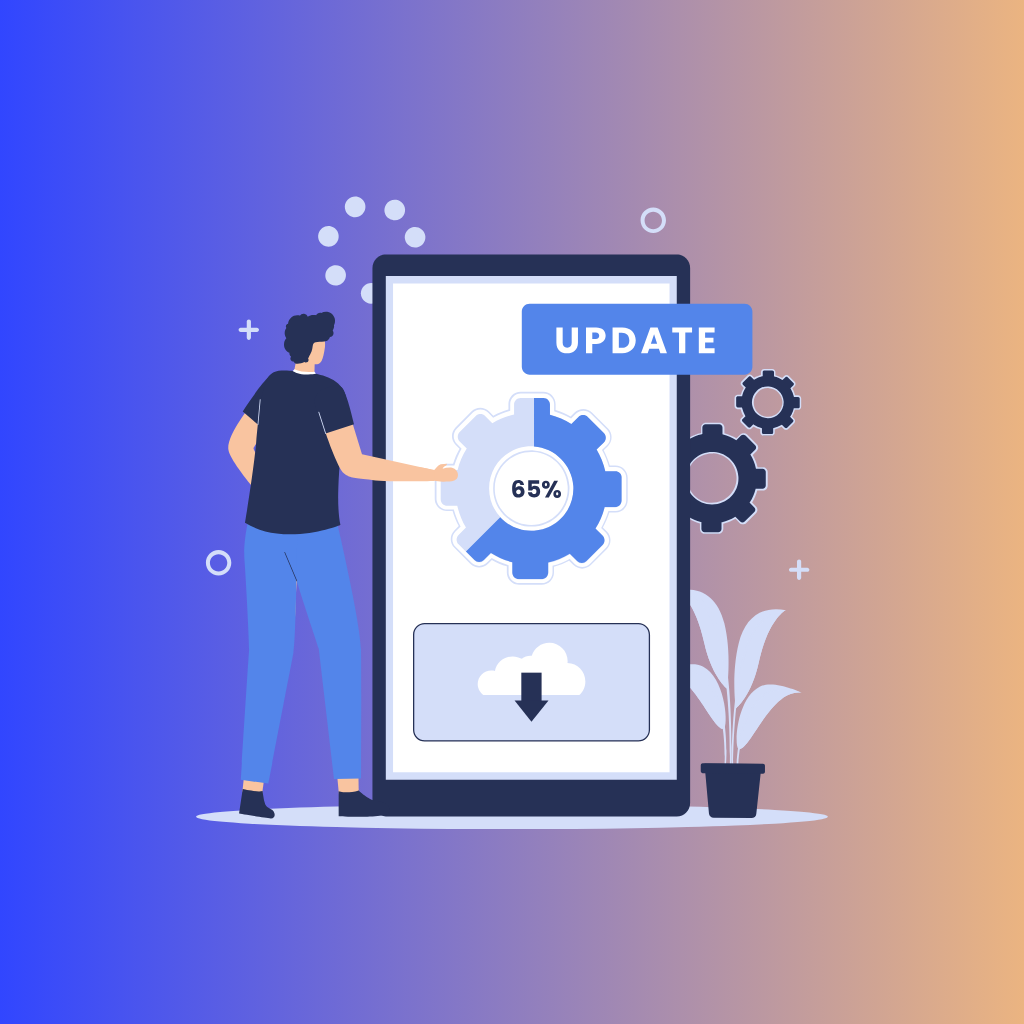Venturing into the realm of app development presents a unique set of challenges, especially for startups. At the heart of these challenges is the need to balance innovation with the practical realities of limited resources. Startups, unlike established companies, often operate under significant constraints—be it financial, human, or technological. These limitations can make the journey from concept to launch not only arduous but fraught with critical decisions that could define the future of the enterprise.
Understanding these complexities is the first step in navigating the app development landscape successfully. With the right approach, the challenges can transform into opportunities to innovate and outpace competitors, ultimately turning constraints into launching pads for future success. This introductory understanding sets the stage for a deeper exploration of specific challenges and strategies that startups can adopt to thrive in the dynamic and competitive world of app development.
I. Budget Constraints
For most startups, the path to app development is often paved with strict budget constraints. Limited financial resources are a common reality for new businesses, making every dollar spent a significant investment. This scarcity of funds profoundly impacts development choices, forcing startups to make tough decisions about what features to include at launch and what can wait.
Limited Financial Resources
In the startup ecosystem, capital is precious. Most startups do not have the luxury of large-scale investments at their inception, which means that budgeting for app development must be approached with meticulous care. The financial constraints can influence everything from the choice of technology (opting for less expensive tech solutions) to staffing (hiring versatile but perhaps less specialized talent). Each choice must be weighed not only for its immediate cost but also for its long-term value to the company.
Cost-Effective Planning
Given these financial limitations, cost-effective planning becomes essential. Startups can adopt several strategies to maximize their development budget:
- Prioritizing Features: One effective approach is to prioritize the app's features based on their impact on user experience and revenue generation. This prioritization involves distinguishing between 'must-have' features necessary for market entry and 'nice-to-have' features that can be added later. This strategy not only focuses development efforts but also helps in managing the scope of initial development costs.
- Phased Rollouts: Implementing phased rollouts is another strategic approach. This involves launching the app with a basic set of features and then gradually releasing additional functionalities. Phased rollouts help in spreading the development costs over time, allowing startups to manage cash flow more effectively. Additionally, this approach provides an opportunity to gauge user feedback and adjust development priorities accordingly, which can lead to more targeted and efficient use of resources.
II. Time Constraints
In the fast-paced world of app development, time is often just as critical as money, especially for startups eager to establish themselves in the market. The pressure to launch quickly is immense, driven by the need to capitalize on current market opportunities before competitors can claim them.
Need for Quick Market Entry
For startups, the timing of an app’s market entry can be pivotal. Launching quickly allows a startup to tap into market needs while they are still fresh and potentially before the market becomes saturated with similar offerings. The ability to move swiftly can mean the difference between leading a market trend or chasing competitors who have already established a foothold.
Efficient Development Practices
To achieve efficient and speedy development without sacrificing quality, startups are increasingly turning to agile methodologies. Agile development focuses on iterative progress through short cycles or sprints, which allows for continuous improvement and quick adaptation based on feedback and changing conditions. This method is particularly beneficial for startups as it facilitates faster adjustments and reduces the time wasted on non-viable features.
Another strategy is the adoption of the Minimum Viable Product (MVP) model. Launching an MVP means releasing a product with enough features to satisfy early adopters while leaving room for further development based on user feedback. This approach not only accelerates time-to-market but also helps in understanding user preferences and needs, which can drive the app’s future development in a direction that has a higher probability of market success.
Iterative development complements the MVP model by allowing continuous releases and updates, which keeps the product evolving and improving. This practice helps maintain user interest and engagement, as new functionalities are regularly introduced, keeping the app relevant and up-to-date.
III. Technology Choices
The technology stack you choose lays the foundation for how your app operates, scales, and evolves over time. For startups, making informed decisions about technology is not just a matter of technical preference but a strategic imperative that impacts every facet of the business. The right technology can accelerate growth, facilitate maintenance, and ensure scalability.
Choosing the Right Tech Stack
Selecting the appropriate technology stack is pivotal for ensuring that the app can handle growth, remain maintainable, and align with the startup’s long-term goals. Scalability is crucial because it allows the app to accommodate growth without performance degradation. Maintainability refers to how easy it is to update the app, fix issues, and add new features, which directly affects the long-term viability and cost-efficiency of the app.
To choose the right tech stack, startups should consider:
- Current and Anticipated Needs: Understand what the app needs to do now and what it might need to do in the future. This understanding helps in selecting technologies that are not only sufficient for the current scale but will also scale up as the user base grows and requirements become more complex.
- Community Support and Ecosystem: Opt for technologies with a strong community and comprehensive ecosystems. This provides access to a wealth of resources, libraries, and tools that can accelerate development and troubleshooting.
- Developer Availability and Expertise: Consider the availability of skilled developers who can work with chosen technologies. A more common or popular technology stack might offer a larger pool of developers, potentially reducing hiring costs and timelines.
Adapting to Technological Changes
Technology evolves at a breakneck pace, and keeping up with this evolution is a challenge that can significantly influence a startup’s competitiveness. Adapting to technological changes means staying informed about new technologies, assessing their impact on your business, and being ready to pivot or upgrade your tech stack when necessary.
To effectively manage rapid technological changes, startups should:
- Continuous Learning and Training: Encourage and facilitate ongoing learning and training for your development team. This ensures that the team remains capable of implementing new technologies and best practices.
- Networking with Other Developers and Tech Communities: Engaging with the broader tech community can provide insights into emerging technologies and methodologies, offering a glimpse into potential future trends.
- Flexible Architectural Design: Design your app’s architecture to be flexible, allowing easy integration of new technologies without extensive overhauls. This can include using microservices architectures that allow parts of the app to evolve independently of others.
IV. User Acquisition and Retention
Acquiring and retaining users is a fundamental challenge for startups, especially in the competitive app market where user preferences can shift rapidly and options are plentiful. Building a loyal user base not only requires an app that meets a market need but also one that continually engages and satisfies users. For startups, this involves not just marketing the app effectively but also continuously enhancing the user experience to encourage sustained use.
Building a User Base
The first hurdle for any startup is attracting users. This challenge is intensified by the presence of established competitors who already have a foothold in the market. To stand out, startups must leverage both their unique selling propositions and effective marketing strategies. Key aspects include:
- Understanding the Target Audience: Deeply understanding who the app's users are, what they need, and how they behave is crucial. This knowledge allows startups to craft marketing messages and app functionalities that directly address user expectations and pain points.
- Effective Use of Marketing Channels: Utilizing a mix of digital marketing strategies such as social media, content marketing, email campaigns, and possibly influencer partnerships can be effective. The choice of channels depends on where the target audience is most active and receptive.
- Incentivization: Offering initial incentives such as free trials, discounts, or exclusive content can attract users to at least try the app, providing a foothold for further engagement.
Engagement Strategies
Once users are on board, retaining them requires continuous engagement and satisfaction. High user churn rates can be detrimental, nullifying the effort spent on acquiring users in the first place. Effective engagement strategies include:
- Personalization: Customizing the user experience based on individual user data and preferences can significantly boost engagement. Personalization can range from tailored content and recommendations to personalized alerts and interfaces.
- Regular Updates and Features: Continuously updating the app with new features, bug fixes, and enhancements shows users that the app is growing and improving, which can encourage continued use.
- User Feedback Integration: Actively seeking and integrating user feedback into app development can lead to improvements that users genuinely want, enhancing their satisfaction and loyalty. This approach not only makes users feel valued but also helps in fine-tuning the app to better meet user needs.
- Community Building: Creating a sense of community around the app can be a powerful retention tool. Features that allow user interaction, shared experiences, or even gamification elements can increase the stickiness of the app.
5. Regulatory and Compliance Issues
For startups, navigating the maze of regulatory requirements and ensuring compliance is daunting but critical. These obligations are particularly significant in the tech industry, where data privacy laws and other regulations heavily influence app development and operation. Understanding and adhering to these legal frameworks is not only a legal necessity but also a key trust factor for users.
Understanding Legal Requirements
Startups must first understand the specific legal requirements applicable to their industry and the nature of their app. This includes:
- Data Privacy Laws: With the increasing emphasis on user data protection globally, understanding data privacy laws such as the GDPR in Europe, CCPA in California, or other local data protection regulations is crucial. These laws dictate how user data should be collected, processed, and stored.
- Industry-Specific Regulations: Depending on the app’s focus area, there may be additional industry-specific regulations. For example, health apps may need to comply with HIPAA in the U.S., financial apps with FINRA or SEC regulations, and children’s apps with COPPA.
- International Compliance: For apps targeting users in multiple countries, compliance becomes even more complex as they must meet the legal standards of each jurisdiction.
Startups must allocate sufficient resources to thoroughly understand these requirements to avoid potential legal pitfalls that could result in hefty fines or legal battles.
Implementing Compliance Measures
Implementing effective compliance measures without overwhelming limited startup resources requires a strategic approach:
- Use of Standardized Tools and Services: Leveraging existing tools and services that ensure compliance can be a cost-effective strategy. For example, using cloud services that offer built-in security and compliance features can reduce the burden of developing these systems in-house.
- Regular Compliance Audits: Conducting regular audits can help ensure that the app remains compliant as laws and regulations evolve. This proactive approach is often more efficient than making major changes after compliance issues arise.
- Privacy by Design: Incorporating privacy and compliance into the app design from the outset is more effective than retrofitting compliance measures later. This approach not only minimizes the risk of non-compliance but also builds user trust from the beginning.
- Training and Awareness: Ensuring that all team members are aware of compliance issues and their responsibilities is crucial. Regular training sessions can help maintain a high level of compliance awareness among staff.
Navigating the complex landscape of app development presents numerous challenges for startups, from managing tight budgets and time constraints to making the right technology choices and ensuring scalability. Each stage of the journey—from initial conception to launching and scaling—requires careful consideration and strategic decision-making. However, these challenges also serve as opportunities to innovate and distinguish oneself in the competitive market.
Startups are often in a unique position to adapt swiftly and think creatively due to their size and the necessity to stand out. Budget constraints encourage prioritizing essential features and efficient use of resources. Time constraints push for agile methodologies and the MVP approach, which can lead to faster iterations and quicker feedback loops. Selecting the right technology stack and adapting to technological changes ensure that the app remains current and scalable, addressing future user needs as they arise.
Each of these challenges, when met with resilience and flexibility, can lead to significant growth and development for a startup. The ability to adapt and innovate in the face of obstacles is what often separates successful startups from those that struggle. Therefore, startups should embrace these challenges, viewing them as catalysts for improvement and innovation.
In conclusion, the journey of app development for startups is fraught with challenges, but it is these very challenges that provide the richest opportunities for growth. By approaching each hurdle with resilience, flexibility, and a strategic mindset, startups can not only overcome these challenges but also thrive and make a significant impact in the tech ecosystem.




